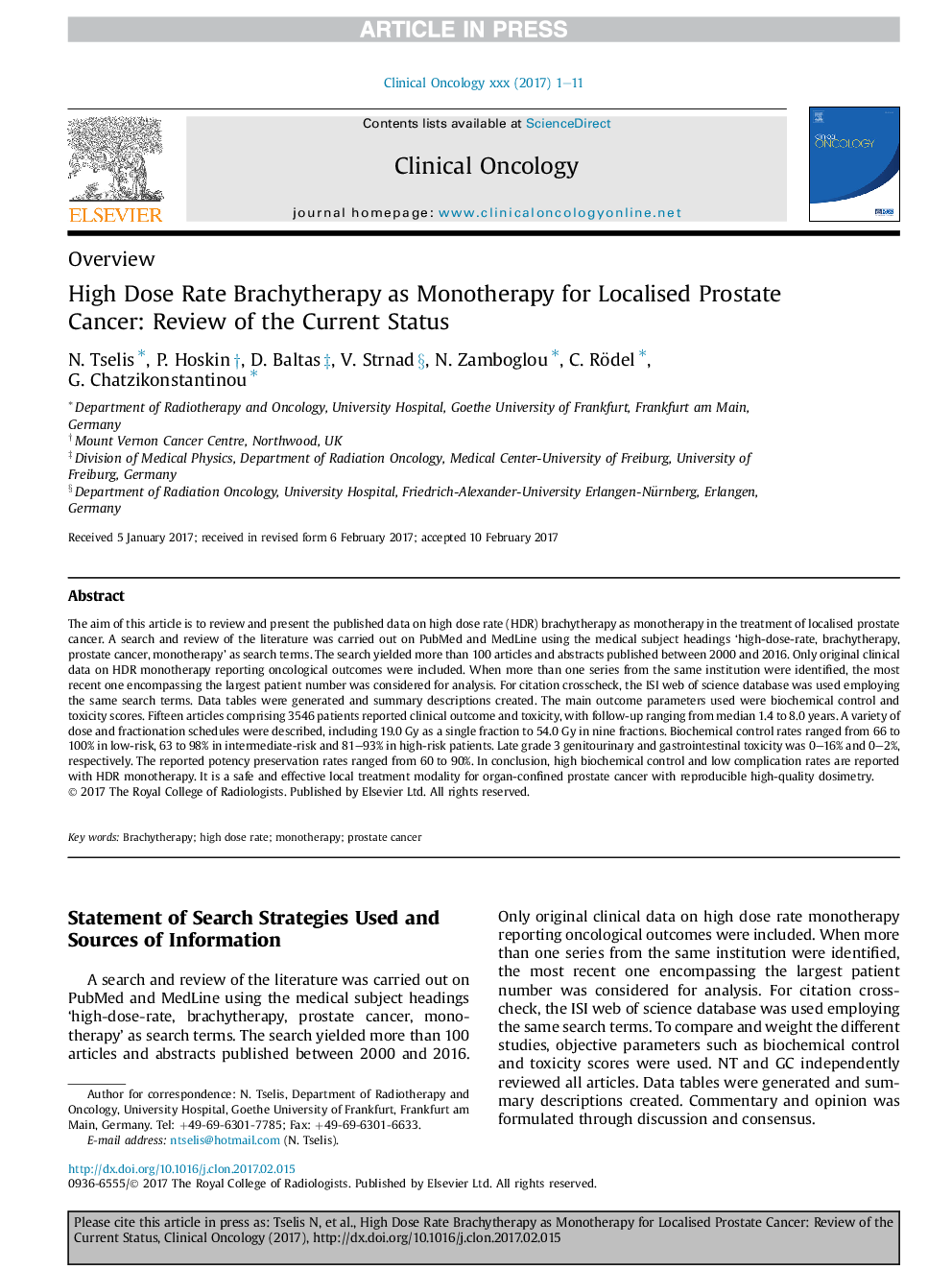| Article ID | Journal | Published Year | Pages | File Type |
|---|---|---|---|---|
| 5697730 | Clinical Oncology | 2017 | 11 Pages |
Abstract
The aim of this article is to review and present the published data on high dose rate (HDR) brachytherapy as monotherapy in the treatment of localised prostate cancer. A search and review of the literature was carried out on PubMed and MedLine using the medical subject headings 'high-dose-rate, brachytherapy, prostate cancer, monotherapy' as search terms. The search yielded more than 100 articles and abstracts published between 2000 and 2016. Only original clinical data on HDR monotherapy reporting oncological outcomes were included. When more than one series from the same institution were identified, the most recent one encompassing the largest patient number was considered for analysis. For citation crosscheck, the ISI web of science database was used employing the same search terms. Data tables were generated and summary descriptions created. The main outcome parameters used were biochemical control and toxicity scores. Fifteen articles comprising 3546 patients reported clinical outcome and toxicity, with follow-up ranging from median 1.4 to 8.0Â years. A variety of dose and fractionation schedules were described, including 19.0Â Gy as a single fraction to 54.0Â Gy in nine fractions. Biochemical control rates ranged from 66 to 100% in low-risk, 63 to 98% in intermediate-risk and 81-93% in high-risk patients. Late grade 3 genitourinary and gastrointestinal toxicity was 0-16% and 0-2%, respectively. The reported potency preservation rates ranged from 60 to 90%. In conclusion, high biochemical control and low complication rates are reported with HDR monotherapy. It is a safe and effective local treatment modality for organ-confined prostate cancer with reproducible high-quality dosimetry.
Related Topics
Health Sciences
Medicine and Dentistry
Oncology
Authors
N. Tselis, P. Hoskin, D. Baltas, V. Strnad, N. Zamboglou, C. Rödel, G. Chatzikonstantinou,
